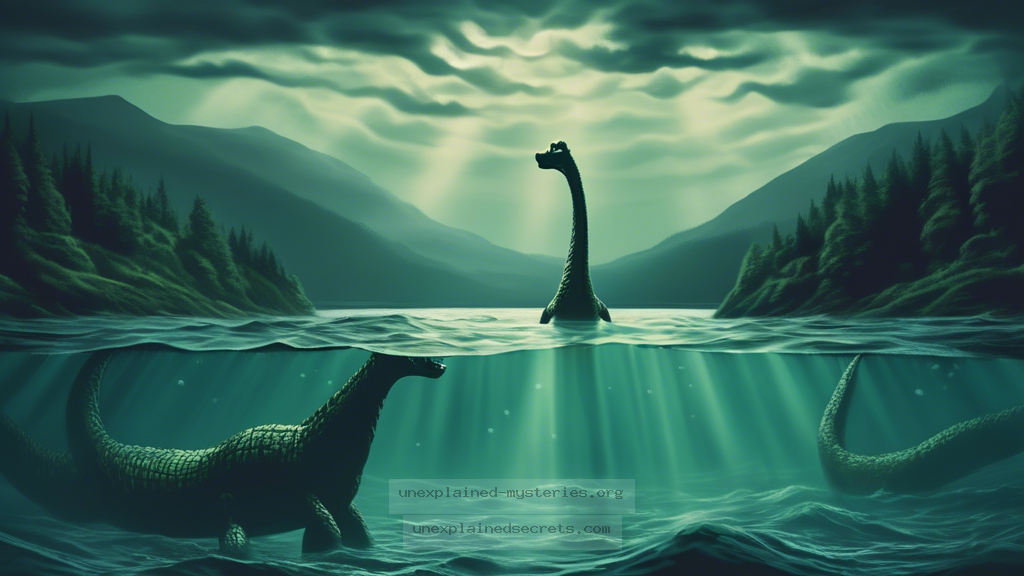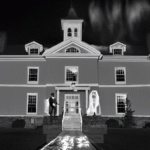What Lies Beneath the Surface of the Loch Ness Mystery? Unraveling the Legend of Nessie
What Lies Beneath the Surface of the Loch Ness Mystery? Unraveling the Legend of Nessie
The legend of the Loch Ness Monster, affectionately known as Nessie, has captivated the imaginations of people around the world for decades. But what is it about this elusive creature that continues to inspire both skepticism and belief? In this comprehensive exploration, we’ll delve into the historical context of Loch Ness sightings, the theories that have emerged, and the ongoing investigations that seek to uncover the truth behind this cryptozoological enigma.
Introduction: The Allure of Nessie
The notion of a mysterious creature lurking beneath the murky waters of Loch Ness is deeply embedded in Scottish folklore. For many, Nessie symbolizes the intersection of myth and reality, drawing tourists, researchers, and enthusiasts to the Scottish Highlands. The Loch Ness Monster serves not only as a subject of fascination but also as a vehicle for exploring broader themes of nature, belief, and the unknown. This question matters because it challenges our understanding of what is possible in the natural world and pushes the boundaries of scientific inquiry.
Historical Context: From Folklore to Modern Sightings
The legend of Nessie can be traced back to ancient times. The earliest recorded sighting dates back to the 6th century when Saint Columba reportedly encountered a large creature in the loch while on a mission to convert the Picts to Christianity. However, it wasn’t until the 1930s that the modern fascination with Nessie truly took off. In 1934, the infamous “Surgeon’s Photo” surfaced, allegedly depicting the creature’s head and neck above the water. This photograph sparked a media frenzy and propelled Nessie into the realm of popular culture.
Over the decades, numerous sightings have been reported, with witnesses describing a variety of shapes and sizes, ranging from a long-necked creature to something resembling a prehistoric reptile. These accounts vary widely, with some witnesses claiming to have seen Nessie multiple times, while others remain skeptical of its existence. As the legend grew, so did scientific interest, leading to various investigations aimed at uncovering evidence of Nessie’s existence.
Core Concepts: Cryptozoology and the Search for Nessie
Cryptozoology, the study of animals whose existence is not substantiated by mainstream science, plays a pivotal role in the quest to understand Nessie. Enthusiasts and researchers within this field often rely on anecdotal evidence, folklore, and unverified sightings to build their case for the Loch Ness Monster’s existence. The core concepts of cryptozoology emphasize the importance of exploring the unknown and challenging conventional scientific narratives.
Several hypotheses have been proposed regarding what Nessie might actually be. Some suggest that it could be a surviving Plesiosaur, a marine reptile from the age of dinosaurs, while others think it could be a giant eel or even a large fish. Each theory presents its own set of challenges and implications, especially concerning biological plausibility and the ecological environment of Loch Ness.
Practical Implications: Evidence and Investigations
Over the years, numerous investigations have been conducted in Loch Ness. These range from sonar scans to underwater photography and even DNA sampling. One significant effort was the 2018 project led by the Loch Ness Project, which utilized environmental DNA (eDNA) analysis to seek signs of unknown species in the loch. The results revealed a diverse array of species, including salmon and eels, but no definitive evidence of a large creature.
Despite the lack of concrete proof, the ongoing intrigue surrounding Nessie has led to economic benefits for the local area, including tourism, merchandise sales, and festivals celebrating the mystery. This phenomenon highlights the impact of cryptozoological research on local economies and the broader implications of cultural folklore on societal values.
Alternative Perspectives: Skepticism and Rational Explanations
While many are captivated by the idea of a lake monster, skepticism also plays a significant role in the narrative of Loch Ness. Critics argue that the majority of sightings can be attributed to misidentifications of common animals, floating debris, or even hoaxes. The “Surgeon’s Photo,” once considered a definitive piece of evidence, has since been revealed as a staged photograph involving a toy submarine and a model of a dinosaur.
Moreover, scientific skepticism emphasizes the need for rigorous methodologies and empirical evidence when studying cryptids. As such, many researchers advocate for a more grounded approach to understanding the natural world, urging enthusiasts to consider ecological realities and biological limitations when pondering the existence of creatures like Nessie.
Common Misconceptions: Debunking Myths
There are numerous misconceptions surrounding the Loch Ness Monster that deserve clarification. One of the most common is the belief that Nessie must be a singular, living creature. In reality, many sightings may involve different animals or phenomena over time. Furthermore, the idea that Loch Ness is an isolated ecosystem capable of sustaining a large creature is challenged by scientific studies indicating that such a habitat would struggle to support a prehistoric reptile.
Loch Ness is a large freshwater lake in the Scottish Highlands, but it is not particularly deep compared to other lakes worldwide. The average depth is approximately 132 meters (433 feet), which raises questions about the possible size and survival of a large creature.
Best Practices for Investigation: Approaching the Mystery Scientifically
For those intrigued by the prospect of investigating the Loch Ness Monster, adopting a scientific approach is essential. Here are some best practices for enthusiasts and researchers alike:
- Gather Reliable Evidence: Focus on collecting credible data, such as eyewitness accounts, photographs, and sonar readings.
- Utilize Modern Technology: Leverage advancements in technology, such as drones and underwater cameras, to explore the loch more thoroughly.
- Collaborate with Experts: Work alongside biologists, ecologists, and cryptozoologists to gain a broader understanding of the ecosystem.
- Maintain Objectivity: Keep an open mind while remaining skeptical of extraordinary claims without empirical evidence.
Future Developments: Ongoing Research and Exploration
The quest for Nessie is far from over, with ongoing research and new technologies continuously emerging. The field of environmental DNA analysis is particularly promising, as it allows researchers to detect the presence of species without needing to capture or observe them directly. Future investigations may uncover more about the biodiversity of Loch Ness and potentially provide insights into the legend of Nessie.
In addition, as interest in cryptozoology grows, we may see an increase in funding and resources dedicated to the exploration of unexplained phenomena. This could pave the way for more comprehensive studies that blend folklore with scientific inquiry, ultimately enriching our understanding of both the natural world and human imagination.
Conclusion: The Enduring Enigma of Loch Ness
The Loch Ness Monster remains one of the most compelling mysteries in the realm of cryptozoology. While evidence supporting the existence of Nessie is largely anecdotal and often disputed, the cultural significance of the legend persists. By examining the historical context, scientific perspectives, and ongoing investigations, we gain a deeper appreciation for the intersection of myth and reality.
As we continue to seek answers, the Loch Ness Monster serves as a reminder of our enduring fascination with the unknown and the stories that shape our world. Whether Nessie is real or merely a figment of our collective imagination, the mystery invites us to explore, question, and ultimately embrace the wonders of the unknown. 💡
Other Articles
Recent Posts
- What Happened to Flight MH370? The Conspiracy Theories That Still Haunt Us
- What Secrets Lurk Within the Walls of the Infamous Trans-Allegheny Lunatic Asylum?
- What Evidence Supports the Existence of Bigfoot in the Pacific Northwest?
- What Happened to the Indus Valley Civilization? Unraveling the Mysteries of Ancient Urban Life
- Can Telepathy Be Scientifically Proven Through Laboratory Evidence?







